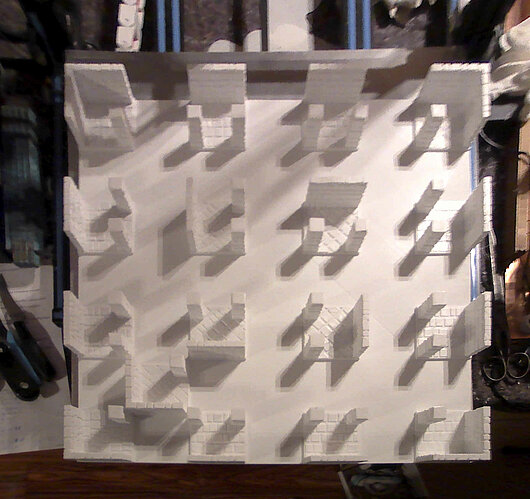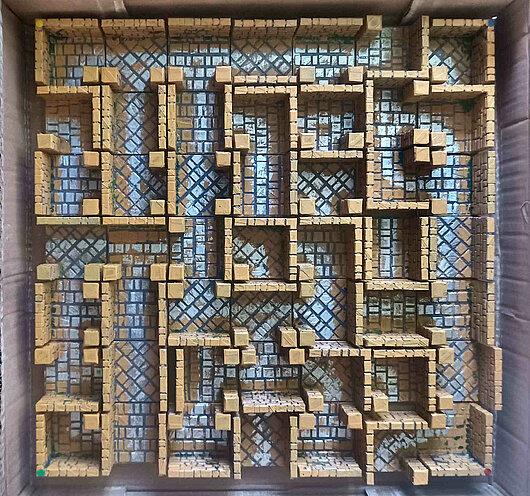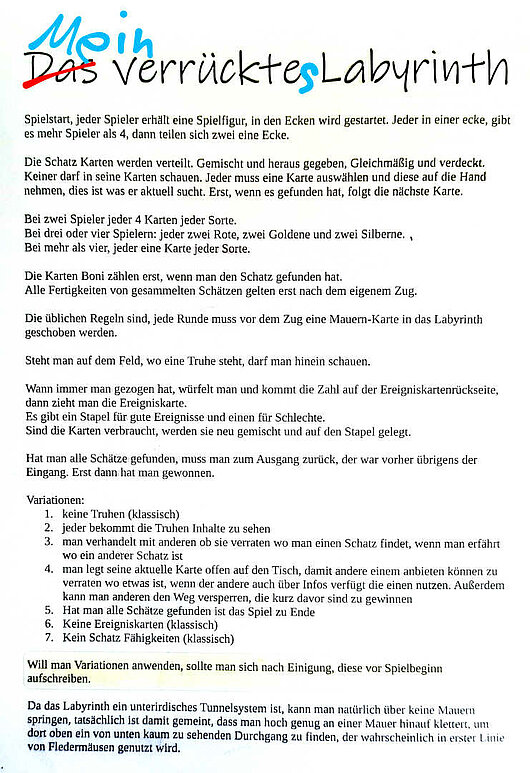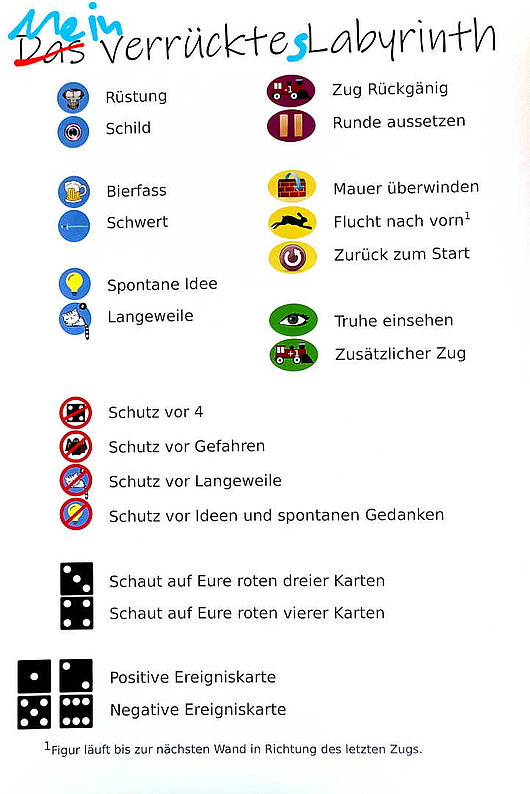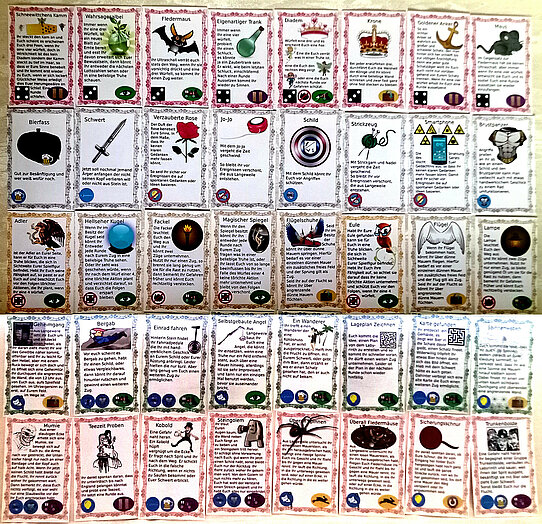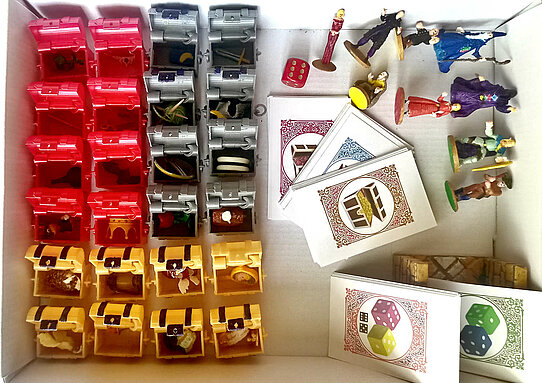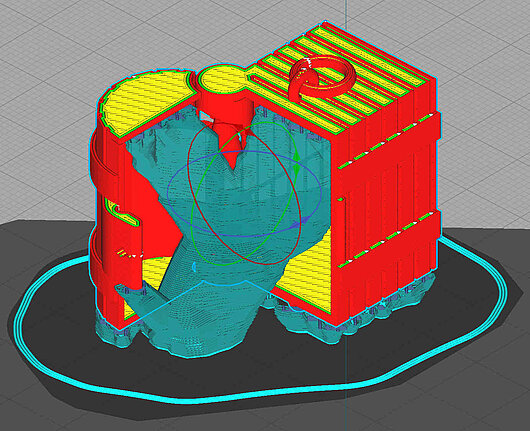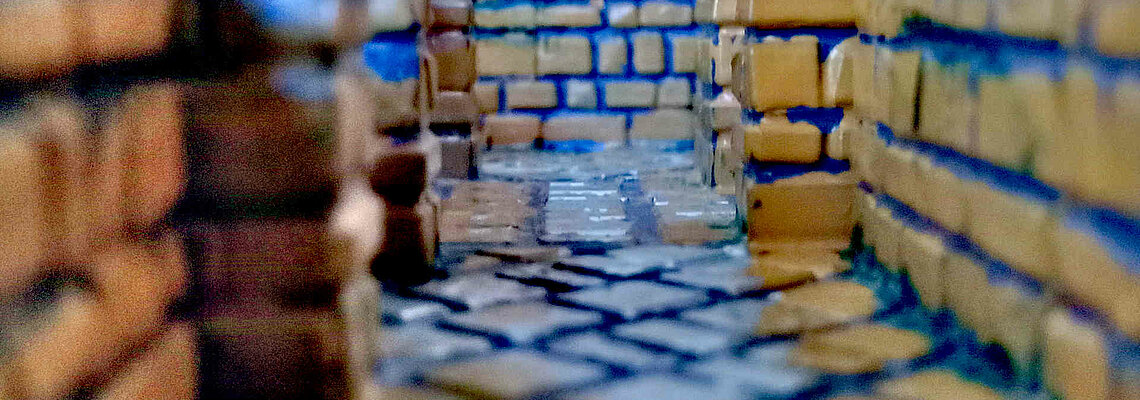
Board game 3D printing
Childhood memory the crazy labyrinth
I really liked playing the board game, the crazy labyrinth, with relatives as a child. Every now and then you thought of the game when you wanted to play something together at family gatherings. Then I looked around on thingiverse.com and found a movable 3D labyrinth, then only game pieces and treasures with the associated cards were missing.
If I create a game, I can also modify it. I've always thought that every treasure should have a trait. So I thought of 24 treasures in 3 categories and looked for models and adapted them or put together my own from different ones. For example, I took the shoes from a figure and the wings from a bird and made winged shoes out of them, which of course have the property that you can fly over a wall with them.
In the first rounds of the game I found it to be balanced. Adding treasure chests so you have to search for the treasures was beneficial due to my good memory. But of course you can also play it classically, but the tightened rules should inspire rather than deter, like the obi squirrel.
The game board
It should of course be one big board, so I created the game board with Blender and the different maze pieces. With my CR-10-S5 it should be possible to print 500mm x 500mm, it was, but it was more difficult than expected.
The difficulty with printing was mainly the faulty firmware, with which you could always measure something that was not correct with the measured one, you had to correct every point manually. Another difficulty was that newly acquired material had to be printed more slowly. Also, the print warped very easily and lifted off the bottom plate, destroying the correct shape. When everything was going very well, the nozzle heating element failed and the interruption and cooling that the stupid firmware then caused destroyed another print. In the end I settled for a reasonably good print, most wouldn't see a flaw in that.
A board game in 3D is less easy to fold, so it takes up a lot of space. So you should have a large box ready for all parts and the necessary space for them.
The rules
The main thing is that you write down at the beginning which rules should apply, then you can play it how everyone likes it.
The treasures can be hidden in chests to make things a little more difficult. The attentive player uses his memory.
Every treasure has an advantage or disadvantage. You can protect yourself from that if you find the right ones first.
The gold ones are packed with benefits, the silver ones offer protection from danger, and the ruby ones can be moody.
After a completed turn, the dice are rolled for an event. The number tells you whether it is positive or negative. 1, 2 and 3 open up the chance for an advantage and 4, 5 and 6 can bring a disadvantage.
For example, if you found the extremely valuable treasure, the ship's anchor made of pure gold, and you roll a 4, you will have to miss a round to recover from the exhausting transport.
On the other hand, the golden treasure, lamp or torch is particularly advantageous, with the help of which another move is possible.
Event cards always have a requirement. For example, the Safety Cord event is a spontaneous idea, this requirement is met from the start, but the player might lose out on spontaneous ideas if they are infatuated with an enchanted rose or constantly checking their smartphone.
Events can be both beneficial and detrimental, it is good to protect yourself in some situations and detrimental in others. The player can partly decide for himself if he has found a golden treasure like the owl, whether it should offer protection or scout something.
Cards, Treasures and Figures
You can recognize the cards by their edge colors or backs.
- Red ones with die 3 or 4 for ruby cards
- Silver for silver cards
- Gold for gold cards
- Green for most advantageous event cards
- Red for mostly disadvantageous event cards
There are some small differences in appearance between the pictorial representations and the objects that I have printed, but so far there has been no difficulty in discerning this unless someone can confuse an eagle and an owl.
The silver cards are directly connected to the event cards, many things are only possible or prevented thanks to the silver cards.
Also, it's not all 3D prints, because the knitting actually consists of two toothpicks and a small green woolen thread.
Since this is an experimental game, because I partly thought it up myself and all parts were made by myself, there are of course also changes during the creation. So I first decided to paint the chests and then decided against it because I assumed that you could recognize a chest from the painting and that they should look identical to cause maximum confusion.
I tried a lot with the figures and found out what problems can occur with 3D printing. After a new nozzle and a reduction in the printing speed, quite respectable figures were still possible. I refrained from a flawless print, because a good print is enough for my prototype of the game.
As always with me, there are special features, such as the spider card, which only uses an image that looks like there is a really big spider perched on the card.
The 3D print
Every G-code I used to print has been saved. 24 chests, 24 treasures, 8 game figures, a playing field of 500 mm x 500 mm with 16 wall parts and 34 wall parts were printed. Without ever having printed the parts beforehand, it was usually satisfactory on the first try. Some were even freshly drawn for this purpose, in Blender and FreeCAD. I drew and labeled 40 cards, the pictures are mostly from free sources like clipsafarie, but they also had to be adapted and fitted.
Unfortunately, I never received real playing cards, i.e. the ones that become opaque on the inside with black glue, so thick printable business cards were enough.
Comments
No Comments
